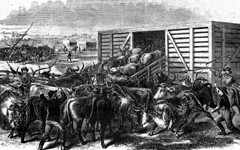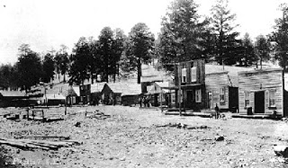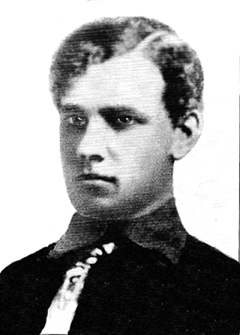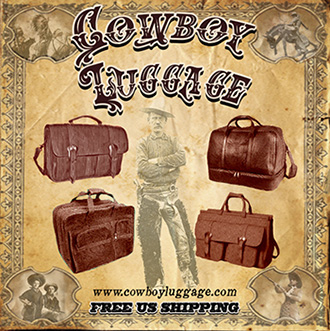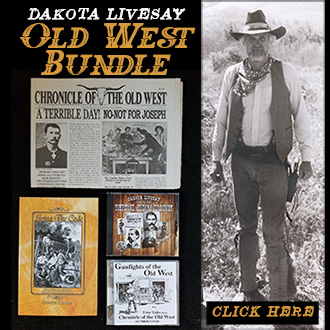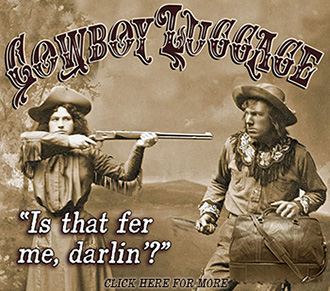On September 25, 1867, Oliver Loving, one of the great pioneer Texas cattlemen, died at the age of 55. Incidentally, the story of his de ath may have a familiar ring.
ath may have a familiar ring.
Oliver Loving was born in Kentucky, and moved to Texas at the age of 33 where he engaged in farming and freighting. And finally, at the age of 44, when most men are choosing a quiet life, Loving got involved with cattle, and driving them to places where they had never been.
In 1858 he took Texas longhorns to Chicago along what was to be later known as the Shawnee Trail. About a year later he took cattle up to Denver to supply the needs of the gold miners.
Following the Civil War, Oliver Loving teamed up with Charles Goodnight and in 1866 they established the Goodnight-Loving Trail that went from Texas to Fort Sumner, New Mexico.
The second year they took the trail they encountered a number of Indians, causing delays in the drive. To assure the buyers that the cattle were on the way, Loving and Billy Wilson went in advance of the cattle to Fort Sumner. Along the way they encountered some Indians. And in a skirmish Loving was shot in the wrist and side.
Thinking he was going to die, Loving persuaded Wilson to leave him. But Loving didn’t die. For seven days he crawled, without food, until he encountered some men who took him to Fort Sumner. Gangrene had set in his arm, but an inexperienced doctor chose not to amputate.
When partner Charles Goodnight arrived in Fort Sumner, he was excited to discover Loving had survived. But the news was not good. The gangrene had gotten so bad that even after amputation, Loving died three weeks later.
If the story of Loving’s death sounds a bit familiar, it’s probable because you’ve watched the movie Lonesome Dove, and remember the character, Gus McCall, said to have been patterned after Loving.

